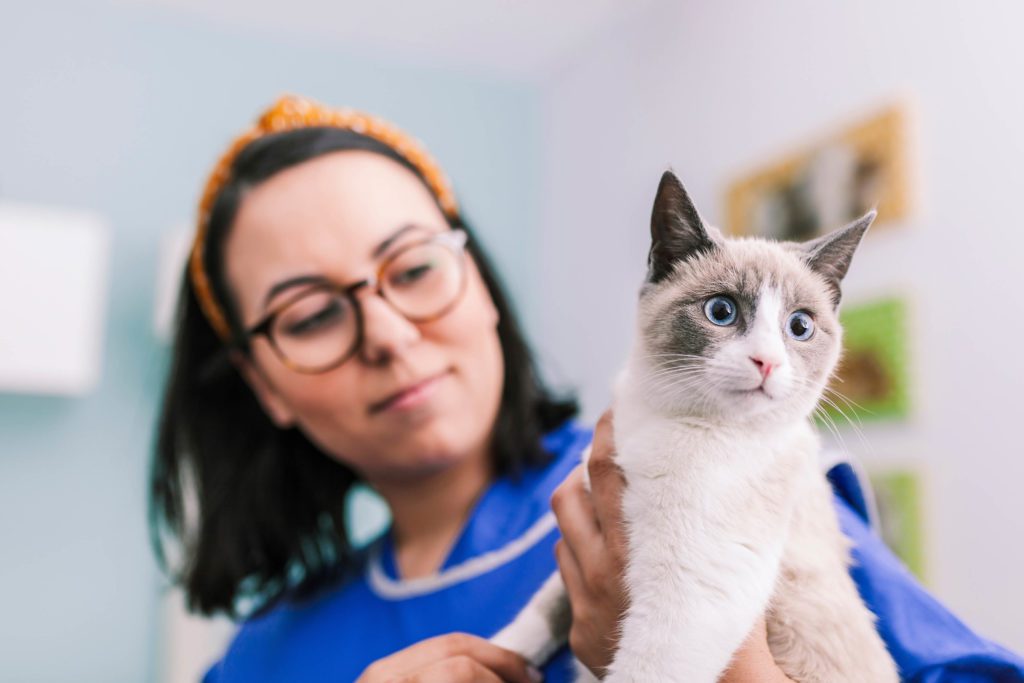It’s generally accepted that people should have health insurance. But what about their pets? Veterinary bills can be expensive, especially when unexpected accidents and illnesses are involved, and pet insurance can help cover the costs. Some pet owners buy coverage on their own, but pet insurance has also emerged as a popular employee benefit. Employers who are considering adding this perk should consider whether it will be worthwhile for their workers.
Many Pet Parents Struggle with Vet Bills
Americans love pets. According to the American Veterinary Medical Association (AVMA), 38.4 percent of households own a dog and 25.4 percent own a cat. Birds, fish, ferrets, rabbits, reptiles and other animals are also often kept as pets.
When people adopt pets, they don’t always think about the veterinary costs. According to CareCredit, the average lifetime cost for a dog ranges from $7,565 to $19,060. Treating a broken bone costs $2,371 on average, treating a foreign object in the stomach costs $3,262 on average, and treating cancer with chemotherapy costs $4,000 on average.
These costs can be unexpected, and many people lack the savings needed to pay for emergency treatment. As a result, people may start fundraisers or go into debt to pay for veterinary care, or simply forego care. Pet insurance offers another option.
How The Coverage Works
Pet insurance plans vary widely, so it’s important to check the terms.
To buy pet insurance, policyholders need to pay a premium, often on a monthly basis. The cost can vary significantly depending on the level of coverage and the animal. There may also be a deductible and coverage limits.
Most pet insurance plans provide coverage through reimbursement. The owner will pay the veterinary bill and then submit a claim in order to be reimbursed.
Pre-Existing Conditions
The Affordable Care Act established protections for people with pre-existing conditions, but this healthcare law does not apply to pet insurance. Pet insurance plans can, and often do, exclude pre-existing conditions.
This means that if your dog if diagnosed with cancer and you realize you can’t afford the veterinary bills, it’s too late to purchase pet insurance. The best time to buy pet insurance is when the animal is still healthy, often when the owner first adopts the pet. The age of the pet can also impact rates, meaning that pet insurance premiums for older pets may be more expensive.
Certain conditions may also be excluded from coverage. These exclusions can apply to all pets, or they may apply only to certain breeds. For example, some dog breeds are known for being susceptible to certain health conditions, and these conditions may be excluded from coverage.
Exotic Pet Insurance and Animal Exclusions
Pet insurance companies often offer plans for cats and dogs. If you want to buy a pet insurance policy for a cat or a dog, it should be fairly easy to find coverage, although there may be exclusions for certain breeds and pre-existing conditions.
Exotic pet insurance for animals other than cats and dogs can be much harder to find. Fewer insurance companies offer policies for birds, ferrets and other animals, so your options will be slim. Additionally, coverage may be more restricted.
What Does a Pet Insurance Policy Cover?
Pet insurance plans can provide different levels of coverage, so it’s important to understand the type of pet insurance plan you’re buying.
Many plans cover emergency veterinary bills related to accidents or illnesses. For example, your dog swallows a toy and now has an intestinal blockage. Or maybe your dog is acting lethargic and unwell. After performing some diagnostic tests, the vet determines that the dog has cancer and need surgery to remove the tumor. In both cases, comprehensive pet insurance coverage that includes accident and illness coverage may cover costs related to exams, tests, surgery, treatment and prescription medications, depending on the terms. It’s important to read the policy to understand the limits and restrictions.
Also, while pet insurance policies often cover both illnesses and accidental injuries, some policies are more limited. An accident only pet insurance policy may cover broken bones, wounds and other injuries. If your dog or cat gets hit by a car or attacked by another animal, this coverage may apply. However, if your pet is diagnosed with cancer, diabetes, arthritis or another illness, accident only pet insurance will not provide coverage.
Most pet insurance plans exclude coverage for routine and preventive care, such as annual exams and vaccines. These costs tend to be relatively modest and predictable, and many pet owners budget for these costs out of pocket. However, some pet insurance providers offer pet insurance plans that include wellness coverage for routine and preventative care. Of course, these plans can be more expensive than plans that exclude wellness coverage.
Should Pet Owners Embrace Pet Insurance? Pros and Cons
According to YouGov, 69 percent of Americans have at least one pet, and 88 percent of pet owners consider a pet to be a member of the family. While most people love their pets, 39 percent say that health issues are one of the biggest challenges, and 34 percent say that finances are a major challenge.
For some pet owners, pet insurance offers a practical way to make sure that emergency veterinary bills will be covered. That way, if an illness or accident occurs, the pet owner can focus on taking care of the pet instead of worrying about the costs.
However, the downsides of coverage may mean that pet insurance is not a practical option for certain pet owners. For example, someone who has adopted an older pet with medical issues may not be able to find affordable coverage, and any coverage that is available may come with strict limits and exclusions.
Pet Insurance as an Employee Benefit
The majority of Americans have pets. Therefore, it’s reasonable to assume that the majority of your U.S. workers have pets. These workers may be interested in getting the best pet insurance as an employee perk.
Of course, not everyone will be interested in pet insurance. Some workers don’t have pets. Others may have pets that are typically excluded from coverage, or they may have other plans to pay for veterinary costs. However, many workers will be happy to receive coverage, and for these workers, pet insurance can be offered as a voluntary benefit. This arrangement allows for workers to pay for premiums through convenient payroll deductions, and they may also benefit from group rate discounts.
Pet insurance benefits may also give employers an advantage in their talent recruitment and retention efforts. According to the ASPCA, close to one in five households adopted a dog or cat during the pandemic. Employers can use pet insurance as a way to attract these new pet owners. In fact, Benefits Pro says that pet health insurance is a leading perk to attract Millennial job seekers, many of whom own pets.
Should You Add Pet Insurance to Your Employee Benefits Package?
A strong employee benefits package can help boost engagement and attract talent, and pet insurance can be part of your total benefits package. Do you need help putting together your employee benefits program? Higginbotham can help. Learn more.






